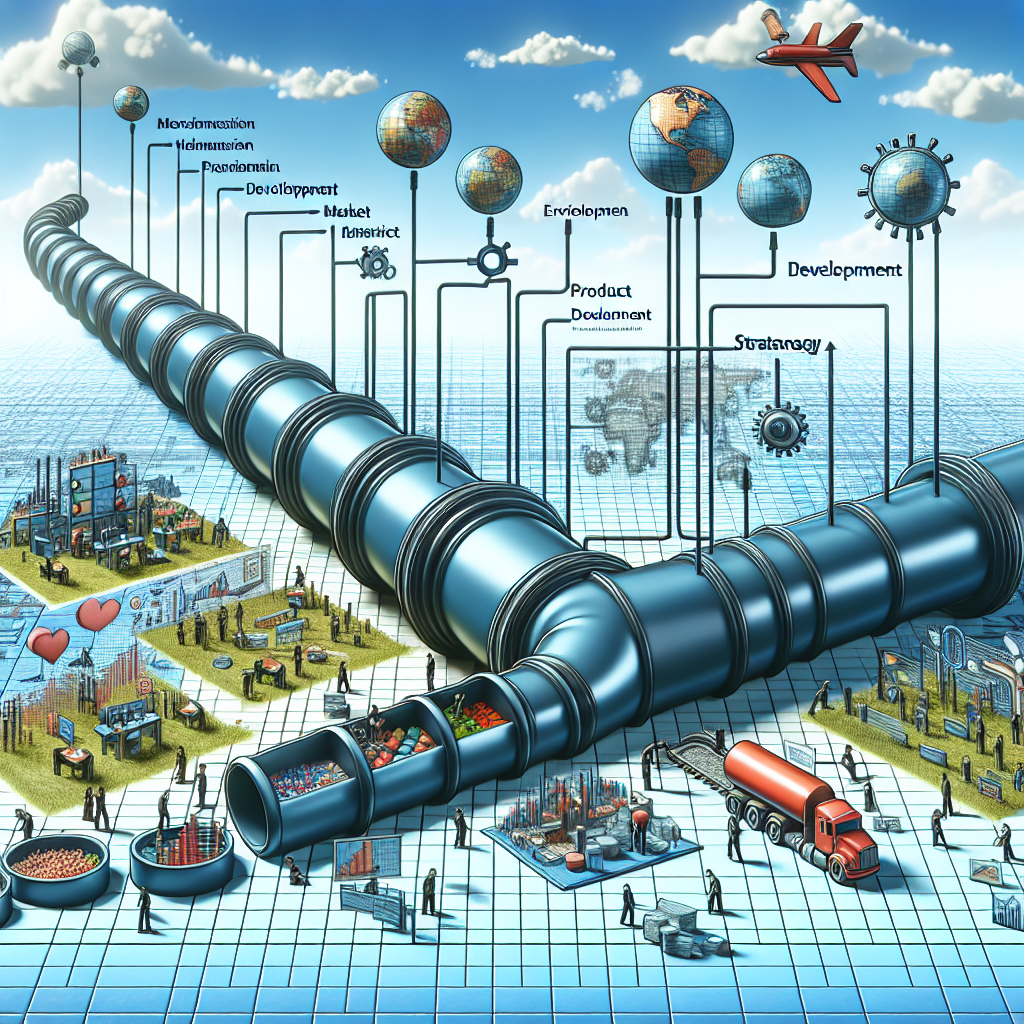Introduction
Pipeline strategy is a pivotal concept in various industries, notably within technology and business sectors. A pipeline strategy outlines the sequential stages of a process to ensure efficient and effective transitioning from one phase to the next.
This research addresses the increasing necessity for streamlined operations in today’s competitive markets, where organizations strive to enhance product development, data management, and project execution. Efficient Content Creation for Competitive Digital Presence can provide further insights into this topic.
Recent advancements in automation and data analytics further underscore the importance of a robust pipeline strategy. These developments necessitate a deeper understanding of how such strategies can be optimized to drive success. For more details, Mastering Content Pipelines: Workflow Efficiency and Best Practices offers a comprehensive guide.
In this research, we aim to explore the components of a pipeline strategy, the challenges it addresses, and its implications for businesses. Key questions include: What are the elements of an effective pipeline strategy? How do organizations implement it? What benefits and challenges are associated with its use?
Literature Review
Existing literature on pipeline strategy primarily focuses on its applications in software development and marketing. Key studies illustrate its significance in accelerating time-to-market and enhancing product quality.
However, gaps remain in understanding its applicability across different sectors beyond technology. Some sources present conflicting views on the scalability of pipeline strategies in small vs. large enterprises. This research will address these gaps and contribute a more comprehensive view of pipeline strategy applications.
The theoretical framework guiding this research includes process optimization models and theories of organizational efficiency, offering a solid foundation for analyzing pipeline strategies systematically.
Methods
This study employs a mixed-methods research design, incorporating both qualitative and quantitative approaches. Data collection methods include surveys distributed to industry professionals, in-depth interviews with business leaders, and analysis of case studies from various sectors.
The sample population comprises professionals from technology, manufacturing, and pharmaceuticals sectors, selected through purposive sampling to ensure relevance and diversity. The research uses standardized interview protocols and survey instruments to gather data.
Data analysis involves thematic analysis for qualitative data and statistical techniques for quantitative data, ensuring a robust and comprehensive examination of findings. Ethical considerations include informed consent and confidentiality assurances for participants.
Findings
The research findings reveal several key components of successful pipeline strategies, including clear process mapping, regular monitoring, and adaptive feedback loops. Tables and charts illustrate the distribution of these components across different sectors.
Significant trends include a higher adoption rate of automated pipelines in technology firms compared to traditional industries. Efficient Content Creation Pipeline Guide provides a practical approach to implementing these strategies. Unexpectedly, smaller enterprises exhibit a more agile implementation of pipeline strategies, often leading to faster innovation cycles.
Quotes from qualitative data highlight the practical experiences of industry leaders, providing deeper insights into the nuances of pipeline strategy execution.
Discussion
The research findings underlie the substantial impact of pipeline strategies on organizational efficiency and product quality. The practical implications include the potential for enhanced collaboration across departments and improved time management.
The study acknowledges limitations such as the reliance on self-reported data and the potential bias in sample selection. Future research could explore longitudinal studies to assess the long-term impact of pipeline strategies.
Recommendations for practitioners include investing in automation tools and fostering a culture of continuous improvement to maximize the benefits of pipeline strategies. Additionally, the integration of these strategies with existing management practices can lead to substantial business growth.
Conclusion
In summary, this research highlights the critical role of pipeline strategies in modern organizational practices. By identifying the key components and implementation practices, it contributes valuable insights to the field.
Next steps involve exploring the evolving landscape of pipeline strategy applications, particularly in emerging industries. The broader implications suggest significant potential for transforming traditional business models.
Readers are encouraged to delve deeper into the topic through additional resources and scholarly articles. Engaging in discussions or applying these concepts can further enhance understanding and practical execution of pipeline strategies.
Related Posts:
Mastering Content Pipelines: Workflow Efficiency and Best Practices (85.85% match)
Efficient Content Creation for Competitive Digital Presence (85.62% match)
Efficient Content Creation Pipeline Guide (85% match)

